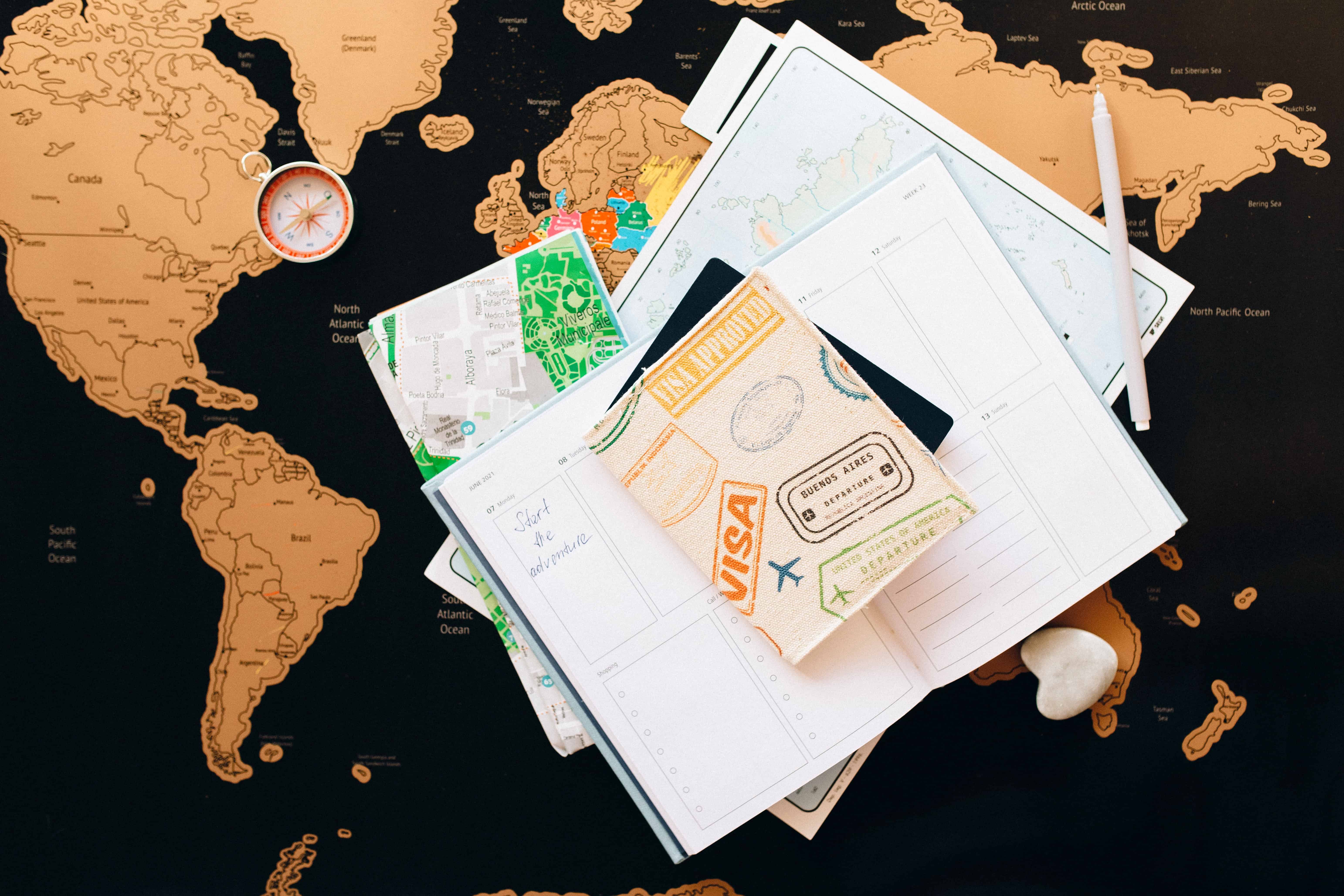A Working Holiday or Work and Holiday visa typically allow you to stay in Australia for 12 months. However, you can extend your stay for up to three years if you meet certain conditions.
I spent my first three years in Australia on this particular type of visa, navigating through all necessary processes, including working under specific requirements and applying for my visa onshore. And so, I want to share my experience that would be helpful to anyone looking to extend their Working Holiday (subclass 417) or Work and Holiday (subclass 462) visa, so you can successfully complete your application too.
What is the difference between Working Holiday visa subclass 417 and Work and Holiday visa subclass 462?
I often get asked about the difference between the Working Holiday visa subclass 417 and the Work and Holiday visa subclass 462. While these two visas share some similarities, such as allowing short-term work, study for up to 4 months, and multiple entries, the eligibility for each visa depends on the passport you hold.
Here’s a quick overview of the key differences in eligibility between these two visa subclasses:
| Requirements | Working Holiday visa subclass 417 | Work and Holiday visa subclass 462 |
| Passport | Belgium, Canada, Republic of Cyprus, Denmark, Estonia, Finland, France, Germany, Hong Kong Special Administrative Region of the People’s, Republic of China (including British National Overseas passport holders), Republic of Ireland, Italy, Japan, Republic of Korea, Malta, Netherlands, Norway, Sweden, Taiwan (other than an official or diplomatic passport), The United Kingdom of Great Britain and Northern Ireland | Argentina, Austria, Brazil, Chile, China People’s Republic of, Czech Republic, Ecuador, Greece, Hungary, Indonesia, Israel, Luxembourg, Malaysia, Mongolia, Peru, Poland, Portugal, San Marino, Singapore, Slovak Republic, Slovenia, Spain, Switzerland, Thailand, Turkey, Uruguay, United States of America, Vietnam |
| Age | For applicants from Belgium, Republic of Cyprus, Estonia, Finland, Germany, Hong Kong, Japan, Republic of Korea, Malta,Netherlands, Norway, Sweden,Taiwan, and The United Kingdom of Great Britain and Northern Ireland must be 18 to 30 when you apply for the visa For applicants from Canada, Denmark, France, Republic of Ireland, and Italy must be 18 to 35 when you apply for the visa | 18 to 30 when you apply for the visa |
| Visa limit | No limitation | A limited number of first Work and Holiday visa to applicants from each eligible country except the United States of America |
| Education | Not required | Meet education requirement specifically on each country |
| English language | Not required | Meet specific English language skill on each county |
| A letter of support from your government | Not required | Applicants need a letter of support from their government if they are from Ecuador, Greece, Indonesia, Luxembourg, Malaysia (Good Conduct Certificate), Mongolia, Peru, Poland, San Marino, Slovenia, Thailand, and Turkey |
How to extend a second Working Holiday and Work and Holiday visa?

So, if you wish to stay another year in Australia, you can apply for a second Working Holiday or Work and Holiday visa, which offers similar benefits to the first visa you already held.
The main condition you need to be eligible to apply for either subclass is that you must have completed the required specific work for a minimum of three months during your first year in Australia.
This work must be done in a specific industry and in certain areas of the country. However, you don’t need to work for three consecutive months as long as you accumulate a total of 88 calendar days of work throughout the year.
How to count 88 days?
Counting for 88 days is a huge confusion that many people face when they try to sort out their visa extension application. While I’m not a visa agency, here are some examples to help you understand if you meet the 88-day requirement based on my own experience:
- Working full time (5 days a week) for 3 months in one go. This will count as 88 days, including days off or rest days.
- Woking on a piecework rate contract (5 days a week) for 3 months in one go. This will also count as 88 days, including days off or rest days.
- Working part time (3 – 5 days a week) for 3 months in one go. This will count as 88 days, including days off or rest days.
- Working on a casual contract (3 days a week) for 3 months. This counts as half of the usual full-time work hours, which is 44 days. In this case, you’ll need another job to add 44 more workdays to reach a total of 88 days.
- Working without a contract (1 – 2 days a week). In this case, only the days you work will count towards the requirement. You’ll need another job to add more workdays to reach a total of 88 days.
Remember that all the work you do needs to be paid at a legal wage and provide you with payslips. If you are still not sure whether you’ve met the 88-day requirement, it’s best to contact a visa agency for help.
The difference in industries and areas for specified work.
The specified work conditions between Working and Holiday and Work and Holiday visas have changed a bit during the Covid period. Here’s a summary of the differences between these two subclasses in terms of approved industries and areas for specified work:
| Working Holiday visa subclass 417 | Work and Holiday visa subclass 462 |
| – tourism and hospitality in northern or remote and very remote Australia, from 22 June 2021 – plant and animal cultivation in regional Australia – fishing and pearling in regional Australia – tree farming and felling in regional Australiamining in regional Australia – construction in regional Australia – bushfire recovery work in declared bushfire affected areas only, after 31 July 2019 – flood recovery work in declared flood recovery areas only, undertaken on or after 1 January 2022, for applications lodged on or after 1 July 2022 – critical COVID-19 work in the healthcare and medical sectors anywhere in Australia, after 31 January 2020 | – tourism and hospitality in northern or remote and very remote Australia – plant and animal cultivation in northern Australia and other specified areas of regional Australia – fishing and pearling in northern Australia only – tree farming and felling in northern Australia only – construction in northern Australia and other specified areas of regional Australia – bushfire recovery work in declared bushfire affected areas only, after 31 July 2019 – flood recovery work in declared flood recovery areas only, undertaken on or after 1 January 2022, for applications lodged on or after 1 July 2022 – critical COVID-19 work in the healthcare and medical sectors anywhere in Australia, after 31 January 2020 |
The areas considered for specified work under the Working Holiday visa (subclass 417) and the Work and Holiday visa (subclass 462) generally depend on their postcodes. These areas may include remote or very remote Australia, northern Australia, tourism areas, regional Australia, bushfire affected areas, and flood affected areas.
To find out whether a particular area is eligible for specified work, you can visit the official immigration website for each visa subclass. Check out this link for a Working Holiday visa subclass 417 And a Work and Holiday visa subclass 462.
Please keep in mind that these guidelines may change over time, so it’s important to stay updated and check the immigration website for the latest information on specified work conditions for your visa subclass.
When can you apply for a second visa?

You don’t have to wait until your first visa is about to expire before applying for a second one. In fact, you can submit your application as soon as you meet the specified work period conditions.
If you apply for a second visa while your first one is still valid, you’ll be on a bridging visa during the processing period. Once your second visa is granted, it will begin from the expiration date of your first visa.
The same goes for applying when your first Working Holiday or Work and Holiday visa has expired. You’ll be on a bridging visa until the second visa is granted, and it will start counting from the expiration date of your first visa.
What about a third Working Holiday and Work and Holiday visa?
If you just can’t get enough of Australia and want to stay for another year, you can apply for a third Working Holiday (subclass 417) or Work and Holiday visa (subclass 462). The benefits for a third-year visa are exactly the same as those for the first and second ones.
To be eligible for this third-year visa, you must hold or have held a second Working Holiday (subclass 417) or Work and Holiday visa (subclass 462) and be aged between 18-30 or 18-35 for some countries.
However, this time around, you’ll need to complete specified work for 6 months or 176 calendar days during your previous visa.
Is it hard to extend the Working Holiday and Work and Holiday visa?
Not at all! In my opinion, it’s even easier than the first-year visa application. You can simply use the immigration account you created for your first-year visa, update the required information, and upload all necessary documents, like payslips from your employers and bank statements. Then, pay the visa fees and wait for an email regarding a health examination request, if needed.
About Health examinations required

Health examinations are a must for second and third-year visa applications, just like for the first year. After submitting your application, you’ll receive an email requesting a health examination. Make sure to schedule an appointment with Bupa Medical Visa Services within 28 days of receiving the email.
Now, if your health examination from your first or second year visa is still valid (typically good for one year), you might not need a new examination for your second or third visa application. And it will save you a couple hundred. However, this could vary depending on individual circumstances. So, keep an eye on your inbox for any updates from immigration after submitting your application.
Conditions on your visa
Working Holiday and Work and Holiday visas typically come with some conditions, such as the 8547 – Employer work limitation (not being able to work for the same employer for more than 6 months) and the 8548 – Study limitation (only being allowed to study up to 4 months).
However, since January 19, 2022, the 8547 or 6-month working limitation has been temporarily relaxed, allowing you to work for a single employer for more than 6 months without permission.
In some cases, you could get No further stay condition which means you are unable to apply for another substantive visa onshore. Keep in mind that this may vary based on individual circumstances. You can find more details about the visa conditions list here.
It seems like a lot of information hey! But trust me, if you plan and organise everything early on, you’ll find it easy to extend your Working Holiday or Work and Holiday visa for up to three years in Australia. The visa process is simple but can take time.
I came to Australia on this visa, and in my opinion, it’s an amazing opportunity. It offers incredible flexibility to explore the country while keeping fees and costs reasonable. So, if you’re eligible for either subclass, get your document ready, submit your application, and pack your bags for the adventure in Australia!
